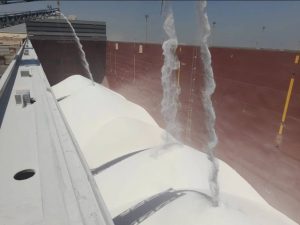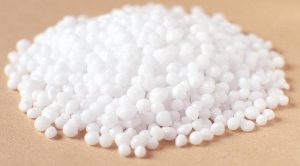UREA

Introduction:
Urea fertilizer is one of the most widely used nitrogen-based fertilizers in agriculture. This article provides an overview of 46% urea fertilizer, its composition, production process, and different types available in the market.
Composition and Production Process:
Urea fertilizer primarily consists of urea, a white crystalline compound containing approximately 46% nitrogen (N). It is produced through the reaction of ammonia and carbon dioxide under high pressure and temperature, resulting in the formation of urea. The production process involves several steps, including synthesis, concentration, prilling or granulation, and drying to obtain the final urea granules.
Types of Urea Fertilizer:
1. Prilled Urea:
Prilled urea is the most common type of urea fertilizer. It is produced by spraying molten urea into droplets that solidify into small, spherical granules. Prilled urea is cost-effective, easy to handle, and has good storage characteristics. It is commonly used in broadcasting or top-dressing applications in agriculture.

2. Granular Urea:
Granular urea is another popular form of urea fertilizer. It is produced by compacting and crushing prills into larger granules. Granular urea offers slower release characteristics compared to prilled urea, making it suitable for long-term fertilization. It provides a more uniform distribution of nitrogen and reduces the risk of nitrogen loss through volatilization.
3. Coated Urea:
Coated urea is a type of urea fertilizer that has a protective coating around the granules. The coating material is typically a polymer or sulfur-based compound. Coated urea releases nitrogen slowly, providing a controlled and sustained nutrient supply to plants. This type of urea fertilizer reduces nitrogen losses, improves nutrient efficiency, and minimizes environmental impact.
4. Urea Solution:
Urea solution, also known as urea liquor, is a liquid form of urea fertilizer. It is produced by dissolving urea granules in water. Urea solution is commonly used in fertigation systems, where it is applied directly to the soil or plants through irrigation. It allows for precise application and efficient nutrient uptake by plants.
5. Urea Formaldehyde (UF) Fertilizer:
Urea formaldehyde fertilizer is a controlled-release nitrogen fertilizer that combines urea with formaldehyde. The formaldehyde reacts with urea to form a long-lasting, slow-release nitrogen compound. UF fertilizers provide a steady supply of nitrogen over an extended period, reducing nutrient leaching and optimizing plant uptake.
Conclusion:
Urea fertilizer, particularly 46% urea, is a widely used nitrogen fertilizer in agriculture. Understanding the different types of urea fertilizers, such as prilled urea, granular urea, coated urea, urea solution, and urea formaldehyde fertilizer, allows farmers and agronomists to make informed decisions regarding their fertilizer choices. Each type of urea fertilizer offers specific advantages in terms of nutrient release, application methods, and environmental considerations. By selecting the appropriate type of urea fertilizer, farmers can optimize nutrient management, improve crop productivity, and minimize environmental impacts.
We are proud to offer a wide range of UREA that guarantee exceptional results for your crops. With a capacity ranging from 1,000 to 50,000 tons, we have the resources to meet your agricultural needs on any scale.
📌FOB
QTY: 1000 up 50000 TON
Packing: Bulk & Jumbo
Origin: Iran
Price: personal connect
👤 Mohsen Sohrabi
📱 +98 915 120 6863
📱 +98 930 225 1005
📧info@Petroparstoos.com